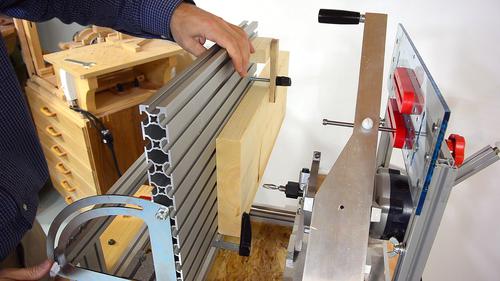 Having just assembled this pantorouter,
I wanted to do a quick demonstration of some of its capabilities.
Having just assembled this pantorouter,
I wanted to do a quick demonstration of some of its capabilities.
 Having just assembled this pantorouter,
I wanted to do a quick demonstration of some of its capabilities.
Having just assembled this pantorouter,
I wanted to do a quick demonstration of some of its capabilities.
The tilting table is nice, but it's been a very long time since I actually made something with an angled tenon (this project in 2008), so tilting the table slightly is not that useful to me.
But tilting the table 90 degrees is also very useful for milling mortises in some very wide stock.
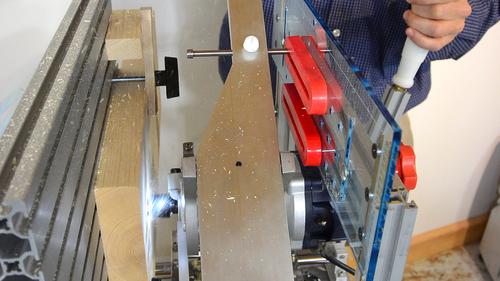
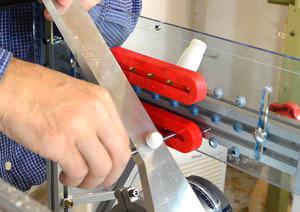 I mounted two of the longer tenon templates on the template holder.
With the holes spaced 1" (inch) apart on the template holder, that makes for 1/2"
increments on the actual workpiece. With the templates 2" apart, my
tenons are spaced 1" apart. I wanted the double tenon to go on the end
of a piece of 2x4, so I decided on 3/8" (9.5 mm) thickness for the
tenons.
I mounted two of the longer tenon templates on the template holder.
With the holes spaced 1" (inch) apart on the template holder, that makes for 1/2"
increments on the actual workpiece. With the templates 2" apart, my
tenons are spaced 1" apart. I wanted the double tenon to go on the end
of a piece of 2x4, so I decided on 3/8" (9.5 mm) thickness for the
tenons.
As usual, I mill the mortises first (using a 3/8" bit, with the follower running in the slots of the templates) so I can then mill the tenons to fit.
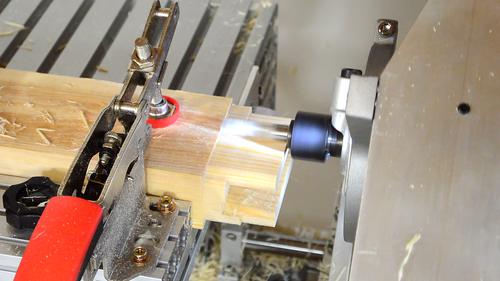
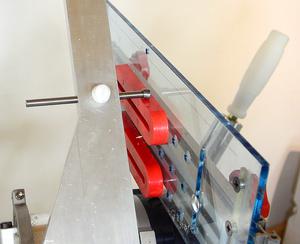 Then milling the tenons. I worked out
that a 9 mm diameter follower would be
just right (the 9 mm follower is not a stock item with the metal pantorouter).
Then milling the tenons. I worked out
that a 9 mm diameter follower would be
just right (the 9 mm follower is not a stock item with the metal pantorouter).
To make 9.5 mm thick tenons with a 9.5 mm bit, I need the bit to sweep a shape that is 19 mm wide. Double that for the template (because the pantograph scales by 1/2), and I need to sweep 38 mm. The plastic template is 29 mm wide, so a 9 mm diameter follower adds up to 38 mm.
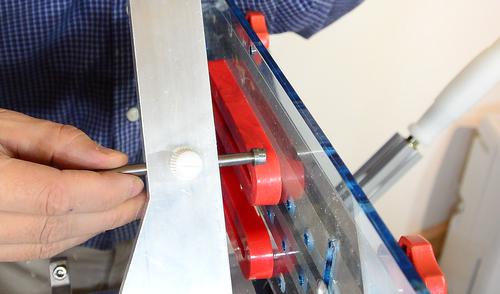 The length of the tenons I cut is slightly less than 1.5" (38 mm). This
is more than the maximum cutting depth of the bit, so I had to cut it
in multiple passes.
The length of the tenons I cut is slightly less than 1.5" (38 mm). This
is more than the maximum cutting depth of the bit, so I had to cut it
in multiple passes.
Without removing the stock from the table, I checked the fit. It was too tight. So I backed the follower away from the template a little. The template has a slight taper, so pulling back the follower means I cut a smaller tenon.
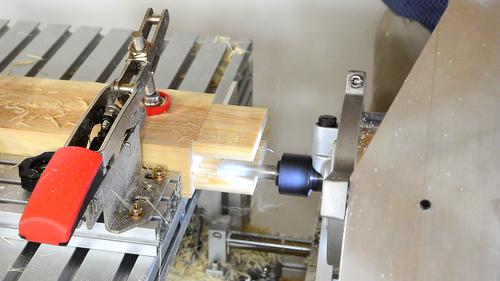 Then cutting all the way around the tenon to trim it to the new size.
Then cutting all the way around the tenon to trim it to the new size.
And the cool thing about cutting a double tenon this way is that it's hardly more work than a single tenon!
The set-up can be a challenge for some. But once set up, cutting out more joints is quite fast.